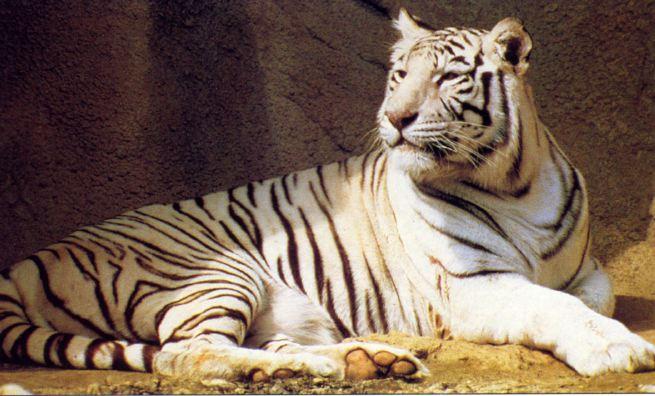|
| 질의: Panthera | 결과: 1778번째/2538 | |
White Bengal Tiger

| 해상도: 655x396
파일크기: 55184 Bytes
등록시간: 2004:06:02 15:09:12
|
From: bevie@cari.net (Bevie)
Newsgroups: alt.binaries.pictures.animals
Subject: white bengal tiger 3.jpg - tiger 3.jpg
Date: Sun, 12 Sep 1999 01:46:40 GMT
White tigers are individual specimens of the ordinary orange tiger (Panthera tigris), with a genetic condition that causes paler colouration of the normally orange fur (they still have black stripes). The condition is well-documented in the Bengal tiger subspecies (Panthera tigris tigris or P. t. bengalensis), may also have occurred in captive Siberian tigers (Panthera tigris altaica), and may have been reported historically in several other subspecies. White pelage is most closely associated with the Bengal, or Indian subspecies. |
^o^
동물그림창고 똑똑전화 누리집
^o^
|
|